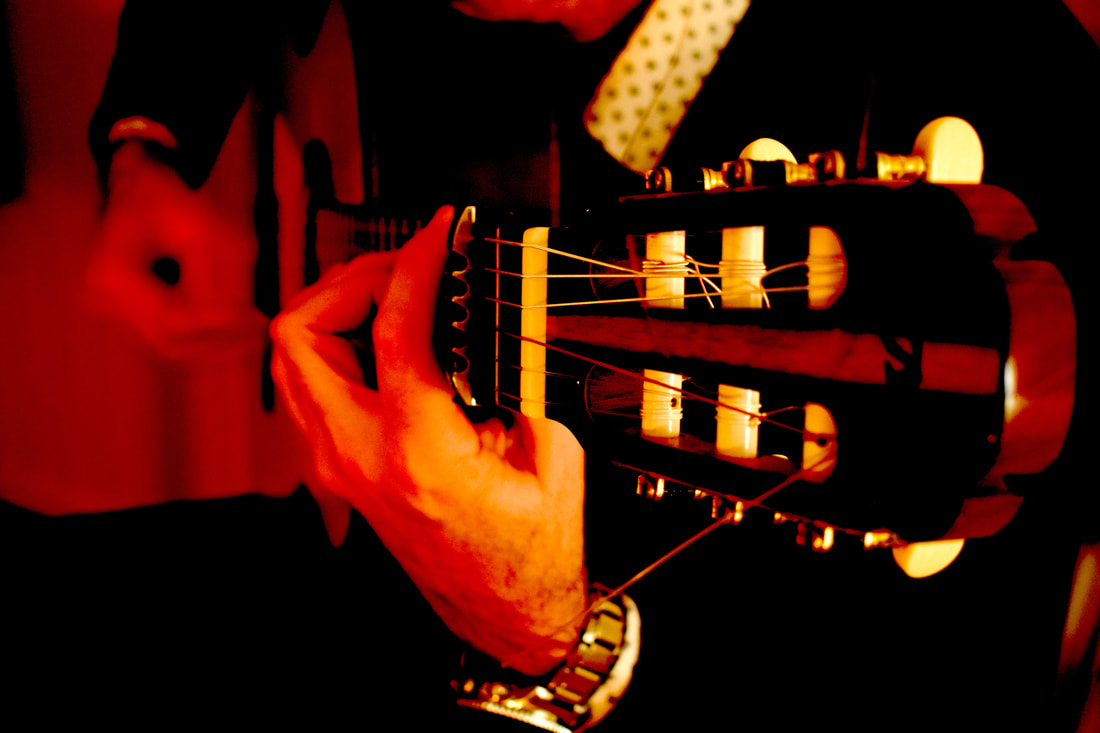'Alzapua' comes from two words - alza which means to lift, and pua which means plectrum – so it means to 'lift [the] plectrum!'
It is one of the different right hand techniques used in flamenco guitar.
To play alzapua, come down with the thumb rest stroke, drop the wrist a bit causing the thumb to hit the next few strings, and then flick the wrist back up.
You're aiming for a little bit of movement from the thumb on the first down stroke, then a little bit of movement from the wrist to hit the next few strings. While simple to describe, this right hand technique takes a lot of time – years – to properly get under control at speed. Many beginner flamenco players cannot control their hand because of the subtle movements meaning they cannot stay in rhythm or play it sloppily.
One important thing to keep in mind for agility and speed when playing alzapua is that your right hand should be loose and relaxed. This means you wrist and hand is free to move – loose – see Rafael's hand in the first video above. This also means on the first rest stroke that you are not applying a lot of pressure onto the next string below – as always with rest strokes, your finger should be loosely resting on the next string, not applying so much weight that it 'bends'.
Last thing - make sure your hands are warmed up!
Learn from a Master Who's Performed for Royalty: Start Your Flamenco Journey Today
- Unlock this article & video library for free
- Join thousands of guitarists who finally got past only 'knowing some basic chords'
- Learn flamenco from a lifelong performer & celebrity teacher from Madrid
- Rafael has taught EOB (Radiohead), Jack Peñate & played for HRH Elizabeth II (etc)
By entering your email you agree to receive email updates from Flamenco With Rafael. See our Privacy Policy.




